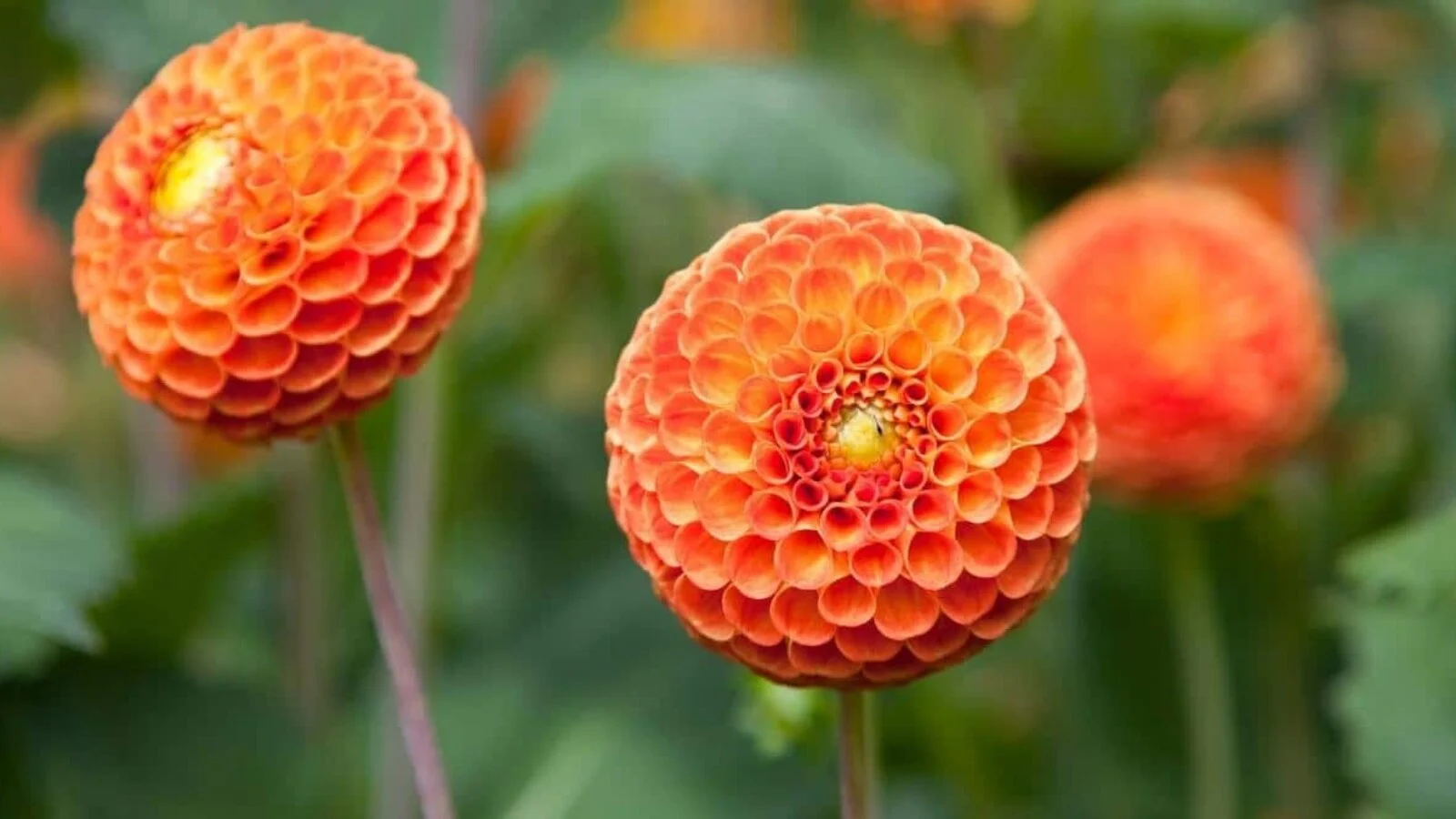Contents
Plants with Orange Flowers: A Vibrant Addition to Your Garden
Orange flowers are a stunning and eye-catching addition to any garden. From bright marigolds to delicate lilies, there is a wide variety of plants that produce these warm-toned blooms. In this comprehensive guide, we will explore some of the most popular orange-flowering plants, their care requirements, and how to incorporate them into your landscape for maximum visual impact.
Marigolds (Tagetes spp.)
Marigolds are one of the most well-known orange-flowering plants. These cheerful annuals come in a range of shades, from pale yellow to deep, velvety orange. Marigolds are easy to grow and thrive in full sun and well-draining soil. They make excellent border plants, edging, and container gardens.Care Tips:
- Plant marigolds after the last frost date in spring.
- Space plants 8-12 inches apart.
- Water regularly, keeping soil moist but not waterlogged.
- Deadhead spent flowers to encourage more blooms.
Daylilies (Hemerocallis spp.)
Daylilies are perennial plants that produce large, showy flowers in a variety of colors, including orange. These tough plants are drought-tolerant and can thrive in a range of soil types. Daylilies are perfect for borders, beds, and naturalized areas.Care Tips:
- Plant daylilies in full sun to partial shade.
- Space plants 12-24 inches apart.
- Water regularly during the first growing season to establish a deep root system.
- Divide clumps every 3-4 years to maintain vigor.
Nasturtiums (Tropaeolum spp.)
Nasturtiums are trailing or climbing annuals that produce vibrant orange, red, or yellow flowers. These plants are known for their peppery-flavored leaves and flowers, which are edible. Nasturtiums are excellent for hanging baskets, window boxes, and as ground covers.Care Tips:
- Plant nasturtiums after the last frost date in spring.
- Provide full sun to partial shade.
- Water regularly, keeping soil moist but not waterlogged.
- Provide support for climbing varieties.
Canna Lilies (Canna spp.)
Canna lilies are tropical-looking perennials that produce large, showy flowers in a range of colors, including orange. These plants prefer full sun and moist, well-draining soil. Canna lilies are perfect for adding a bold, tropical flair to gardens and containers.Care Tips:
- Plant canna lilies in full sun.
- Space plants 18-24 inches apart.
- Water regularly, keeping soil moist but not waterlogged.
- Mulch around plants to retain moisture and suppress weeds.
Butterfly Weed (Asclepias tuberosa)
Butterfly weed is a native perennial that produces clusters of bright orange flowers. These plants are a magnet for butterflies and other pollinators. Butterfly weed prefers full sun and well-draining soil. It makes an excellent addition to native plant gardens and butterfly gardens.Care Tips:
- Plant butterfly weed in full sun.
- Space plants 12-18 inches apart.
- Water regularly during the first growing season to establish a deep root system.
- Avoid disturbing plants once established, as they have a long taproot.
Crossandra (Crossandra infundibuliformis)
Crossandra, also known as the firecracker flower, is a tropical perennial that produces bright orange blooms. These plants prefer full sun and well-draining soil. Crossandra is perfect for growing in containers or as a houseplant in cooler climates.Care Tips:
- Plant crossandra in full sun.
- Water regularly, keeping soil moist but not waterlogged.
- Fertilize monthly during the growing season with a balanced liquid fertilizer.
- Prune spent flowers to encourage more blooms.
Gerbera Daisies (Gerbera jamesonii)
Gerbera daisies are cheerful annuals or short-lived perennials that produce large, daisy-like flowers in a range of colors, including orange. These plants prefer full sun and well-draining soil. Gerbera daisies are perfect for cutting gardens, borders, and containers.Care Tips:
- Plant gerbera daisies in full sun.
- Space plants 12-18 inches apart.
- Water regularly, keeping soil moist but not waterlogged.
- Deadhead spent flowers to encourage more blooms.
Calendulas (Calendula officinalis)
Calendulas, also known as pot marigolds, are cheerful annuals that produce bright orange flowers. These plants prefer full sun and well-draining soil. Calendulas are perfect for cutting gardens, borders, and containers.Care Tips:
- Plant calendulas after the last frost date in spring.
- Space plants 8-12 inches apart.
- Water regularly, keeping soil moist but not waterlogged.
- Deadhead spent flowers to encourage more blooms.
Lilies (Lilium spp.)
Lilies are stately perennials that produce large, showy flowers in a range of colors, including orange. These plants prefer full sun and well-draining soil. Lilies are perfect for cutting gardens, borders, and containers.Care Tips:
- Plant lilies in full sun.
- Space plants 12-18 inches apart.
- Water regularly, keeping soil moist but not waterlogged.
- Stake tall varieties to prevent lodging.
Zinnia (Zinnia elegans)
Zinnias are vibrant annuals that produce large, showy flowers in a range of colors, including orange. These plants prefer full sun and well-draining soil. Zinnias are perfect for cutting gardens, borders, and containers.Care Tips:
- Plant zinnias after the last frost date in spring.
- Space plants 12-18 inches apart.
- Water regularly, keeping soil moist but not waterlogged.
- Deadhead spent flowers to encourage more blooms.
Incorporating Orange Flowers into Your Garden
Orange flowers can add a warm and vibrant touch to any garden. Here are some tips for incorporating them into your landscape:
- Use orange flowers as accents: Plant orange-flowering plants in groups or as focal points to draw the eye.
- Create color combinations: Pair orange flowers with complementary colors like blue, purple, or yellow for a stunning effect.
- Use orange flowers in containers: Plant orange-flowering annuals in containers for a pop of color on patios, decks, or balconies.
- Create a cutting garden: Grow a variety of orange-flowering plants in a dedicated cutting garden for fresh bouquets.
- Attract pollinators: Many orange-flowering plants, such as butterfly weed and crossandra, are magnets for butterflies and other pollinators.
FAQ Section
- What is the best time to plant orange-flowering plants?
Most orange-flowering plants should be planted in the spring after the last frost date. Some, like marigolds and zinnias, can be planted later in the season. - Do orange-flowering plants need full sun?
Most orange-flowering plants prefer full sun, which is at least 6 hours of direct sunlight per day. Some, like crossandra, can tolerate partial shade. - How often should I water orange-flowering plants?
Water orange-flowering plants regularly, keeping the soil moist but not waterlogged. The frequency will depend on factors like temperature, humidity, and soil type. - Do orange-flowering plants need to be deadheaded?
Many orange-flowering annuals, like marigolds and zinnias, will benefit from deadheading spent flowers to encourage more blooms. Perennials like daylilies and lilies do not require deadheading. - Are orange-flowering plants deer-resistant?
Some orange-flowering plants, like marigolds and nasturtiums, are known to be deer-resistant. However, deer preferences can vary depending on location and individual deer populations.
Summary Table
| Plant | Sunlight Needs | Water Needs | Deer Resistant |
|---|---|---|---|
| Marigolds | Full sun | Moderate | Yes |
| Daylilies | Full sun | Moderate | No |
| Nasturtiums | Full sun | Moderate | Yes |
| Canna Lilies | Full sun | High | No |
| Butterfly Weed | Full sun | Moderate | Yes |
| Crossandra | Full sun | Moderate | Unknown |
| Gerbera Daisies | Full sun | Moderate | No |
| Calendulas | Full sun | Moderate | Yes |
| Lilies | Full sun | Moderate | No |
| Zinnias | Full sun | Moderate | Yes |
For more information on orange-flowering plants, you can refer to the Wikipedia article on Flower Colors.In conclusion, orange-flowering plants are a vibrant and eye-catching addition to any garden. From cheerful marigolds to stately lilies, there is an orange-flowering plant for every garden style and climate. By incorporating these plants into your landscape and following their specific care requirements, you can enjoy a burst of warm color throughout the growing season.










